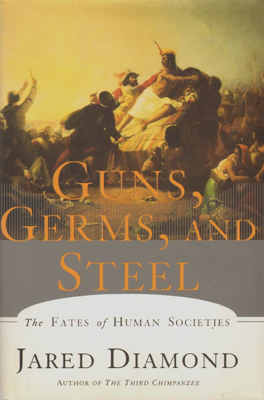LETHAL GIFT OF LIVESTOCK: The Evolution of Germs
The Origins and Evolution of Disease
The chapter explores how the domestication of animals and the development of agriculture contributed to the emergence of infectious diseases in humans. Food production supports denser populations, which are more susceptible to the spread of diseases. Diseases typically associated with crowds, such as smallpox and influenza, arose with the increase in human settlements and were exacerbated by poor sanitation conditions prevalent in growing urban centers.
Lethal Diseases Contributed to Historical Conquests
European conquests, particularly in the New World (the Americas), were significantly aided by diseases like smallpox, which devastated native populations who lacked immunity to Old World pathogens. The text emphasizes that many native societies were decimated more by diseases brought by European settlers than by direct conflict. This interaction starkly illustrates the role diseases played in shaping global history, noting instances such as Cortés's conquest of the Aztecs and Pizarro's conquest of the Incas, where disease outbreaks facilitated European victories.
Disease Transmission from Animals to Humans
The chapter discusses how many major human infectious diseases originated from pathogens that transferred from domesticated animals. For instance, measles likely evolved from rinderpest, a disease found in cattle. Close proximity to domestic animals provided numerous opportunities for the transfer of diseases. This section underlines that adaptation of microbes from their original animal hosts to humans was a complex process, with diseases evolving through stages that range from occasional transmission from animals to humans to becoming fully adapted human pathogens.
The Unequal Exchange of Germs Across Hemispheres
The text analyzes the significant disparity in the exchange of diseases between continents, particularly noting how Eurasian diseases devastated the Americas while few diseases traveled in the opposite direction. This imbalance is attributed to the larger variety and higher populations of domesticated animals in Eurasia compared to the Americas, where few native species were domesticated. This led to a lack of severe epidemic diseases originating from the New World that could affect Europeans.
Impact and Adaptation of Diseases in Human History
The narrative concludes by reflecting on the immense influence diseases have had on human societies. Epidemics have not only shaped the outcomes of conquests and migrations but have also impacted the development of cities and trade routes. The chapter suggests that understanding the evolutionary dynamics of diseases offers critical insights into historical and contemporary human health challenges.
